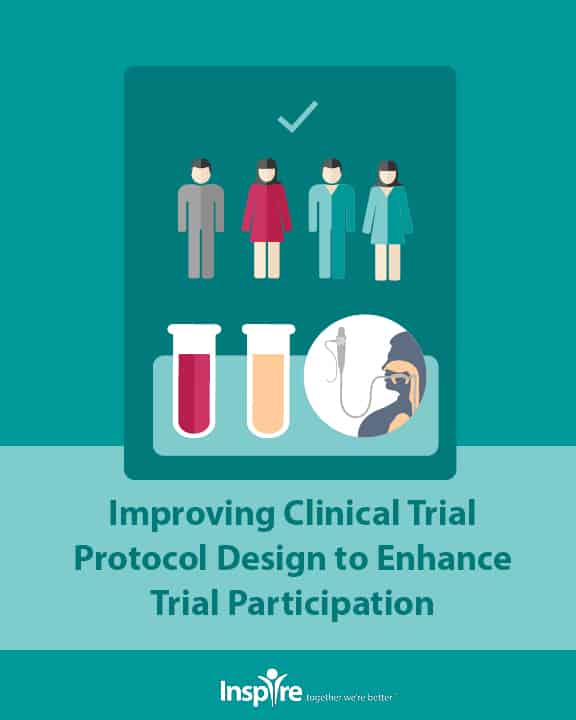Patients Enroll In Studies When They Have a Voice: Real World Study Succeeds with Patient Voice

By Kathleen Hoffman, PhD, MSPH
The most persistent hurdle in running a clinical trial is recruiting and keeping participants. More recently, the FDA added the expectation that the value of released drugs be supported with Real World Evidence (RWE). A recently-conducted multi-center prospective observational study accomplished both by using patients as partners throughout clinical design.
The PROP-UP study was a designed to collect real world patient centered data on the harms and benefits of the new, highly effective, direct-acting antiviral (DAA) drugs used to treat chronic hepatitis C viral infection (HCV).1 HCV is a widespread disease — between 2.5 and 5.2 million people are estimated to be currently infected in the US, and the disease causes liver damage that contributes to liver failure, cirrhosis, and liver cancer. Many patients don’t realize they have HCV until they develop symptoms after years or even decades of chronic systemic viral inflammation.2 The disease also disproportionately affects veterans.3
From the start, the PROP-UP researchers involved patients as design partners. Their first step incorporated 45 interviews with patients being evaluated for treatment, during which they asked the interviewees what kind of potential information they needed to be able to make their treatment decision.
These interviews described an ongoing patient need for enough information to be able to weigh benefits and side effects of treatments. As a result, the research team created an HCV Patient Engagement Group (HCV-PEG) to serve as research partners throughout the project. Members of that group were at various stages in the treatment journey, from pretreatment to those who had been cured, and of a range of ages. Patients’ feedback was incorporated throughout clinical trial implementation, not just design.
The researchers addressed two common complaints about clinical trials: 1) lack of geographical diversity and 2) the use of unusual survey instruments. PROP-UP took place at 11 different sites. The researchers used validated survey instruments, including the Memorial Symptom Assessment Scale (MSAS) and the Patient-Reported Outcomes Measurement Information System (PROMIS®). By using these scales, the study met a desirable objective for RWE studies: to provide long-term results with intermediate measurements at specific points in the patient journey.
Heavy patient involvement in the design — including study outcomes and measures — made it easy for potential participants to say yes to enrollment. In a year and a half, the research team met the goal of having 1600 prospective subjects; got consent from 1,552; collected baseline data of 1,362; and enrolled 1,102 patients. Retention/completion rate for three phases of the long term study – from pre-treatment to 1 year after — was a remarkable 94-98%.4
What led to this success? First, for data collection purposes, the HCV-PEG said they wanted options for how to participate so subjects were allowed to do so at the clinic, by phone, or by email. This was particularly important to ensure that patients who completed treatment would still be involved even if they’d left the area of the site.
Second, symptom reduction and side effects affect adherence for all drugs. Getting a clear handle on the symptoms and side effects is critical. In this case, although controlled clinical trials proved the DAA drugs can invoke a sustained viral response (SVR) to the HepC virus, patients often continue to have side effects long after treatment due to long-term liver damage. What matters most to them? “Since most HCV symptoms are subjective, the correlation between clinical- and patient-reported side effects may be quite low.” The PROP-UP study measured patient-reported outcomes (PROs) as the patients themselves actually described them, including headache, fatigue, and nausea. This is a key differentiator. Many RWE studies, based on EHRs, rely on details noted by clinicians. This data, although important, is filtered and not necessarily the same as what a patient reports themselves.
Another criticism of typical clinical trial designs is the heterogeneity of the study population; does the study identify subgroups with different response rates or adverse effects? It turned out that HCV patients were concerned if having a substance abuse history affected adherence, so it was accounted for in results.
The study also accounted for two other factors, identified by the HCV patient partners, as impacting involvement in a clinical trial: out-of-pocket costs to get the drugs, and the outcome of the eventual study. Patients wanted to be kept informed of their contribution to science. (For this aspect, the research team created a newsletter.)
The study findings, published in September 2019, found that, “In real world clinical practices… Symptom improvements were more pronounced in younger patients, those with baseline mental health issues and multiple comorbidities.”4
But perhaps more importantly, it showed that patient involvement in clinical trial design supports participation and provides RWE on adherence, subgroups, and side effects in novel ways. The study contributed objective results that matter: they complement big data studies and measure what’s really important to the real-world end-users.
Inspire has a community with over 26K members supporting people living with HCV: The American Liver Foundation Liver Disease Support Community on Inspire.
Patient input makes a difference. Download our case study, “Improving Clinical Trial Protocol Design to Enhance Trial Participation.”
Inspire offers a trusted community to patients and caregivers. Our goal with this blog, this website and our content is to provide the life science industry access to the true, authentic patient voice. In so doing, we support faithful operationalization of patient-centricity. Take a look at our case studies, eBooks and news outlet coverage.
References
1 Evon D et al. “Patient Engagement and Study Design of PROP UP: A multi-site patient-centered prospective observational study of patients undergoing hepatitis C treatment. Contemporary Clinical Trials, June 2017. Doi: 10.1016/j.cct.2017.03.013.
2 https://liverfoundation.org/for-patients/about-the-liver/diseases-of-the-liver/hepatitis-c/
3 https://liverfoundation.org/veteransandhepc/
4 Evon, D. et al. “Patient-reported symptoms during and after direct-acting antiviral therapies for chronic hepatitis C: The PROP UP study.” Journal of Hepatology, Volume 71, Issue 3, September 2019, Pages 486-497. https://doi.org/10.1016/j.jhep.2019.04.016.






